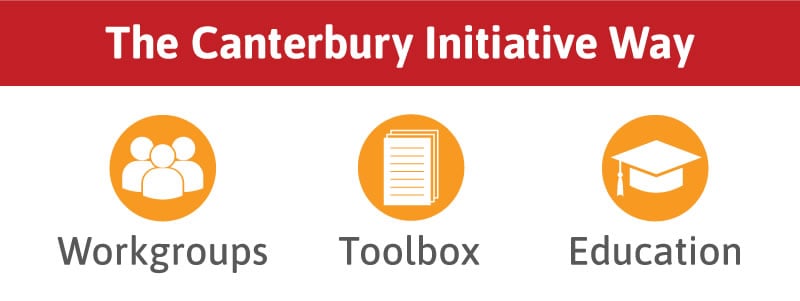McGeoch G, Shand B. HealthPathways: some clarification. Letter in New Zealand Medical Journal 2015;128 (1412).
Dear Sir
We wish to respond to several points raised by Kenealy, Sheridan and Connolly in their thoughtful and encouraging editorial on HealthPathways in the 30 January 2015 issue of the Journal. The statement that the “patient voice is not obvious in the HealthPathways process” is a fair comment, although it needs some clarification.
HealthPathways evolved after a period of intense consumer consultation in Health Services Planning and fulfilled many of the desires to see more transparent and available information for both clinicians and patients. We have presented and discussed HealthPathways with many consumer groups in Canterbury and their usual response is amazement that information on health services was not already available to general practice. The development of the clinical pathways can lead to robust debate and whether this would be stifled or be inappropriate with consumers in the room is a point that needs to be considered. While HealthPathways is written primarily for general practice teams, the main consideration when developing the clinical pathways is the impact on the patient of any proposed change in healthcare delivery. As pointed out in our papers, this safeguarding of the patient is backed up by biannual review of the pathways and regular clinical audit of those in which nonadherence may result in serious adverse events.
The apparent lack of discussion on the ‘patient voice’ in our two papers may reflect the fact that patients do not have access to the website and in many cases may not even be aware their general practitioner is using the website during a consultation. A survey of patients on their perceptions of HealthPathways as suggested in the editorial would therefore not provide relevant or meaningful data. However it is comforting to know that previous studies have shown patients generally have a positive attitude towards clinicians’ use of computers during a consultation, with reservations mainly concerning depersonalisation and loss of efficiency of the doctor patient relationship.
The editorial interpreted our comments on HealthPathways increasing the length of consultations as a negative. However, we are unsure whether this is a positive or a negative as longer consultations may be a consequence of the time required to obtain the relevant clinical information, but result in more thorough and focused examination of the patient.
The importance of patients having access to accurate healthcare information led to the introduction, in 2011, immediately after the Christchurch earthquakes, of a parallel website called HealthInfo. This open access site contains easy to read information on common medical conditions and the details of locally available healthcare services. We are currently planning a survey of patients on their use and opinions of HealthInfo that may go some way to answering the questions raised by Kenealy and coauthors.
The concern raised in the editorial that ‘medical dominance poses an obstacle to interprofessional cooperation” and that “best care is provided by teams” is acknowledged. While the “team approach” used to develop the clinical pathways undoubtedly has been successful, unpublished data from our online survey showed that acceptance and use of HealthPathways by allied health professionals has not been as great as that of general practice teams. This finding confirms the viewpoint of the editorial that a greater degree of linkage of health, social and community services is necessary for further successful implementation of the website. With this aim in mind, nurses and allied health professionals have recently become more involved in the development of the pathways. Incorporating the input of these groups into the pathways has been hard work but has led to greater depth of the pathways and increased use of allied health services by general practice. For example, the falls prevention programme was led by allied health and is showing very good results since its dissemination on HealthPathways.
We agree with the viewpoint of the editorial on the importance of continued integration of health into social determinants of health and hope HealthPathways can assist to reflect and implement this. In this regard, we have already included information on diverse topics such as home heating and land contamination as well as links to social services and public health. The ability of HealthPathways to provide links with a diverse range of healthcare organisations and community groups represents a major challenge for the future, but would go a long way to establishing the website as “the right thing to do” for both patients and general practice teams. We also acknowledge the difficulties of assessing unmet need raised by Kenealy and coauthors. Unmet need is a much discussed and neglected issue and we are concerned that access criteria can leave need unmeasured. For this reason we are currently exploring opportunities to measure unmet need in both referred and unreferred groups of patients.
Lastly, we agree with the editorial that more evaluation of HealthPathways is required to support our conclusions. We consider that the enthusiasm that was apparent in our perspective paper was a reflection of the impact of the website in Canterbury and its scale of dissemination in New Zealand and Australia, but that this enthusiasm needs to be supported by evidence of effectiveness and lack of unexpected negative consequences, not just increased use of the website.

